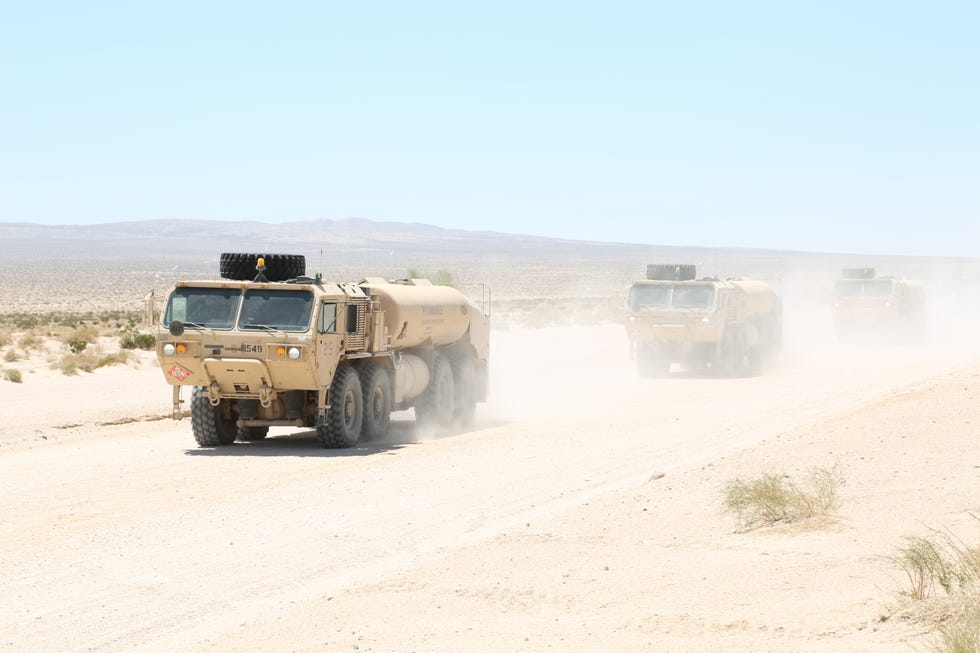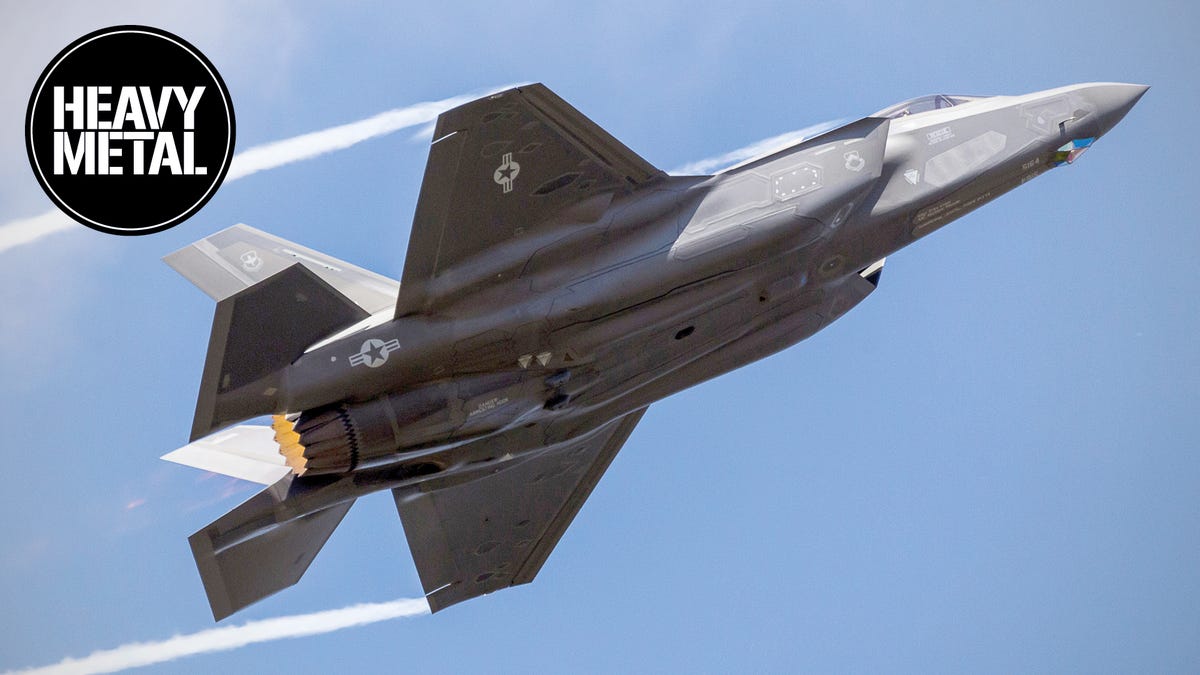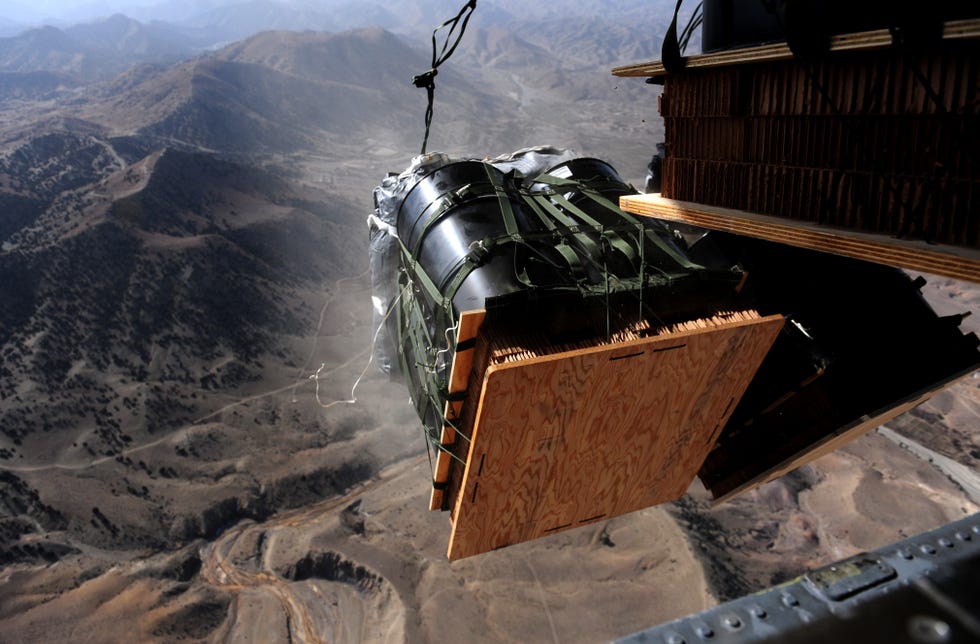KYLE MIZOKAMI

The Pentagon’s frontier-busting scientists want to use lasers to transit energy into war zones.
Electrical power would be converted into laser energy, and then beamed to remote U.S. military bases.
This technology would make the military far less reliant on diesel generators, and the logistics network that sometimes has to dodge enemy fire to supply them with fuel.
Wireless transmission of energy through thin air is a dream that dates back at least a century, and the Pentagon wants to be the first to make it a wide-scale reality.
The Defense Advanced Research Projects Agency (DARPA)—the research and development arm of the U.S. Department of Defense, which has conducted work on everything from the internet to the science behind COVID-19 vaccines—wants to use laser technology to beam electricity to distant U.S. military bases. The inspiration comes from America’s 9/11 wars, and the need for uninterrupted energy at distant, dusty forward operating bases.
The Era of Wireless Energy

A convoy of fuel tankers rolls across the desert at Fort Irwin, California, 2014. Fuel convoys are prime targets for enemy forces, and in wartime, these trucks would need an escort. Beaming energy across the sky to their objective would largely eliminate the need for them.U.S. Army
Famed inventor Nikola Tesla was the first to propose wireless energy transfer back in the 1890s; he believed it would become the standard for sending energy from Point A to Point B. More than 100 years later, humankind still hasn’t quite figured it out.
MORE FROM POPULAR MECHANICS
The History of the M777 Howitzer

Play Video
Currently, energy is sent through wires in the form of electricity, or diesel can power generators that convert the fuel into electricity. In war zones, where enemy forces often strategically cut such wires or fuel supply lines, diesel is airdropped to remote bases or transported in tanker trucks along dangerous roads.
Col. Paul “Promo” Calhoun was one of those pilots, dropping bladders of fuel to special operations forces. Now at DARPA, he’s the program manager for Project POWER (“Persistent Optical Wireless Energy Relay”). Calhoun tells Popular Mechanics that he thinks there are a number of reasons why the time is right for wireless energy transfer now, and why he believes we’ll see a full demonstration of the technology within the next four years.
“First of all, the environment has changed, and the need for more resilient energy transport methods for military operations is at a premium,” he explains by email. U.S. forces—such as the special operations forces he resupplied as a C-17 transport pilot—are operating from distant bases worldwide, from the South China Sea to the Iraqi desert. Many of these forces operate their own radars; anti-drone microwave weapons or lasers; or other energy-intensive equipment, with no easy way to supply them with power. And that problem is growing more acute with each passing year.
“On the technology side, significant advancements have been made in high-energy lasers, wavefront sensing, adaptive optics, high-altitude electric air platforms, safety interlocks, and narrow-bandgap-tuned high-efficiency photovoltaics.”
Enter Project POWER
POWER’s key technology is the use of high-powered lasers. “POWER is an optical power beaming program,” Calhoun says. “There are other potential power-beaming modalities, such as microwaves, that we intend to explore in future programs. For POWER, the propagating wave is a laser which provides long-range high-throughput capability when transmitted at high altitudes. The relays redirect the laser energy without conversion, and then the end user converts that laser energy back into electricity using narrow-bandgap-tuned monochromatic photovoltaics.”

POWER aims to eliminate the temporary conversion to DC energy currently required in beaming laser energy.DARPA
Another key technology in POWER is the use of relays. “Building on these advancements, DARPA sees a significant opportunity to revolutionize energy distribution by developing effective relays. These relays will allow these existing technologies to come together effectively to form a resilient, adaptive, multi-path wireless energy network.”
Drones will be one of those relays. Long-endurance drones, loitering at high altitude at intervals, could beam laser energy to one another over long distances, finally sending it down to a U.S. military base. Satellites will be another relay, performing the same mission in space. “POWER is developing stratospheric platforms that have small apertures with a range of approximately 100 kilometers between nodes. With larger apertures and a more benign environment like space, distances between nodes of up to 1,000 kilometers are reasonable,” Calhoun says. The result would be a “globally scalable energy distribution network.”
Unlike transport aircraft, which can be shot down, or fuel trucks that can be hit by improvised explosive devices, POWER will have few vulnerabilities that enemies could exploit. Jamming, which is playing a prominent role in the Russian invasion of Ukraine, simply won’t work with lasers. “Jamming a wireless power-beaming signal just adds more power to the signal, which only enhances the power transfer,” Calhoun says. “Power-beaming inherently is based on very narrow directional beams, which further increase their resilience against hostile actions.”

Pallets of diesel fuel in 55-gallon drums are airdropped from a C-17 to a waiting drop zone below. POWER would not only eliminate the need for diesel fuel, it would also eliminate the need for airdrops and transport aircraft.Staff Sgt. Andy M. Kin
DARPA is optimistic the POWER system will be ready within four years. “There have already been many demonstrations of point-to-point power beaming, and we could show you a tabletop demo at any point.” Calhoun says. “POWER will demonstrate effective relays over the next 20 months, with airborne low-power demos around 2025, and the full-scale high-power demo as soon as 2027.”
The Takeaway
As with all of its projects, once DARPA has proven the POWER project in principle, it will hand it off to other government agencies to make practical use of. There are also obvious POWER applications in the civilian world, including supplying remote settlements, scientific research stations, and other hard-to-reach places with energy. The energy could also be sourced from renewable sources, making it not only globally accessible, but environmentally friendly.
In the near future, a commando sitting in a forward operating base in the Middle East and an oil worker in the remote Alaskan wilderness may have one thing in common: getting their energy from lasers.
No comments:
Post a Comment